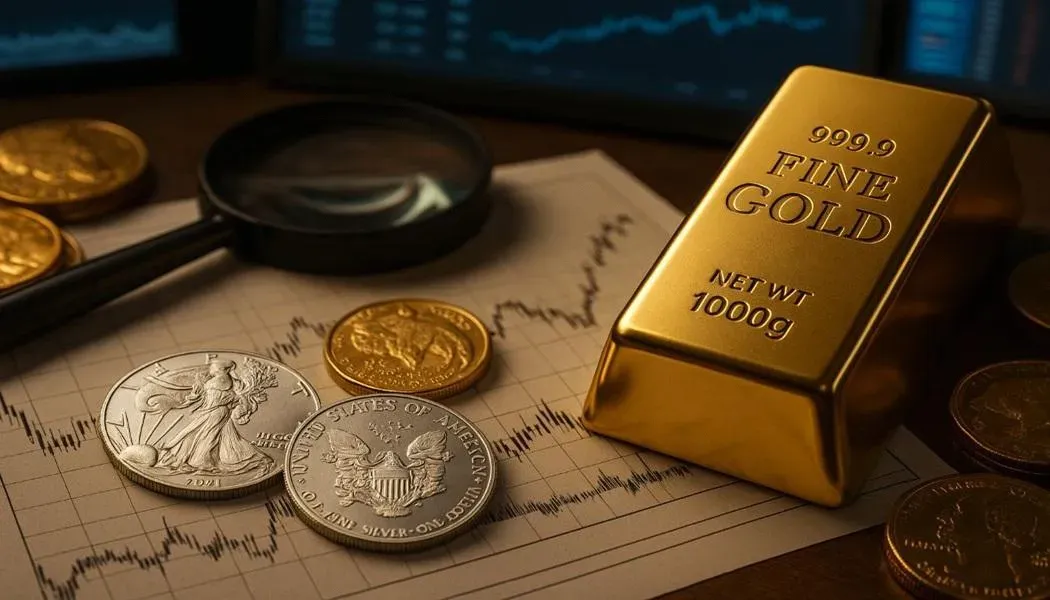
The Learning Curve of Precious Metals Investing
Investing in gold, silver, platinum, or palladium can be one of the most rewarding long-term wealth strategies — but it also comes with pitfalls for newcomers. Many first-time investors enter the market without a clear understanding of how pricing, storage, premiums, or authenticity work. In this article, we’ll explore the top 10 precious metals investment mistakes, explain how to avoid them, and show how using Bullion Hunters’ price comparison tools can help you make smarter, more profitable decisions when you buy gold bullion or rare coins.
1. Ignoring the Difference Between Spot Price and Premium
A common beginner mistake is assuming all gold or silver is priced at the current spot price. In reality, investors pay a premium — a markup reflecting minting, distribution, and dealer margins. Understanding this helps you recognize fair pricing and identify when products are overvalued. Tools like Bullion Hunters’ comparison platform reveal which retailers offer the lowest premiums, helping you buy smarter.
2. Overpaying for Collectible or Commemorative Coins
Many newcomers are drawn to “limited edition” coins that appear exclusive but have little long-term numismatic value. Unless you’re specifically collecting for rarity, focus on recognizable bullion coins such as the American Eagle or Canadian Maple Leaf. These coins maintain stronger resale value and are widely trusted by dealers.
3. Neglecting to Verify Authenticity
Counterfeit bullion remains a risk, particularly in online marketplaces. Always purchase from reputable, authorized dealers and check for features like assay cards, mint marks, and security holograms. Bullion Hunters’ database lets you verify live pricing only from trusted retailers — an essential safeguard for new investors.
4. Ignoring Storage and Security
Buying physical metals is only half the equation; safe storage is the other. Many investors overlook storage costs or choose unsafe locations. Options include home safes, insured vault storage, or private depositories. When calculating investment returns, factor in storage and insurance expenses to get a full picture of ownership cost.
5. Failing to Diversify Across Metals
Relying solely on gold is another frequent mistake. While gold is a premier hedge, silver, platinum, and palladium offer complementary diversification and exposure to industrial demand. A balanced portfolio can protect you from sector-specific volatility and broaden your growth potential.
6. Misunderstanding Liquidity and Selling Options
Not all bullion products sell easily. High-premium collectibles or obscure bars can be harder to liquidate quickly. Stick with highly liquid products from leading mints — such as the U.S. Mint, Royal Canadian Mint, or Perth Mint — for better resale flexibility.
7. Focusing on Short-Term Gains
Precious metals perform best as long-term stores of value, not short-term speculation. Attempting to “time” the market based on daily gold price or silver price fluctuations often leads to frustration and missed opportunities. Historically, gold and silver have outperformed during periods of inflation, economic instability, and declining interest rates — reinforcing their role as strategic hedges for wealth preservation rather than short-term trading instruments.
8. Overlooking Tax Implications
Profits from selling physical bullion are typically subject to capital gains tax. Understanding local regulations can help you plan sales efficiently. Keep accurate purchase records to simplify tax reporting and avoid unexpected liabilities.
9. Not Researching Reputable Dealers
The bullion industry includes both legitimate and predatory players. Before purchasing, compare dealer reputation, reviews, and pricing. Bullion Hunters simplifies this process by showing real-time comparisons from vetted, established dealers — giving investors confidence and transparency in every transaction.
10. Ignoring Global Economic Context
Precious metals don’t move in isolation — they respond to interest rates, inflation data, and currency trends. For example, gold prices often rise when the U.S. dollar weakens or during Federal Reserve rate cuts. Staying informed about macroeconomic indicators helps investors anticipate market shifts instead of reacting to them.
Maximizing Success with Bullion Hunters’ Comparison Tools
One of the most effective ways to avoid these costly mistakes is to leverage Bullion Hunters’ powerful price comparison platform. The tool automatically scans trusted bullion dealers to show where you can buy gold bullion, silver coins, or rare collectibles at the best prices in real time.
By comparing spot-related premiums, you can instantly identify value opportunities, avoid overpaying, and stay ahead of fluctuating markets — all within seconds. For both beginners and seasoned stackers, this data-driven approach ensures transparency, confidence, and long-term profitability in every precious metals investment decision.
Investing Wisely in Precious Metals
Success in bullion investing isn’t about luck — it’s about education, patience, and smart strategy. By avoiding these ten common mistakes, investors can build portfolios that balance security, liquidity, and long-term value. With real-time data and comparison tools from Bullion Hunters, you can invest with clarity and confidence — ensuring that every ounce you buy works toward your financial goals.
